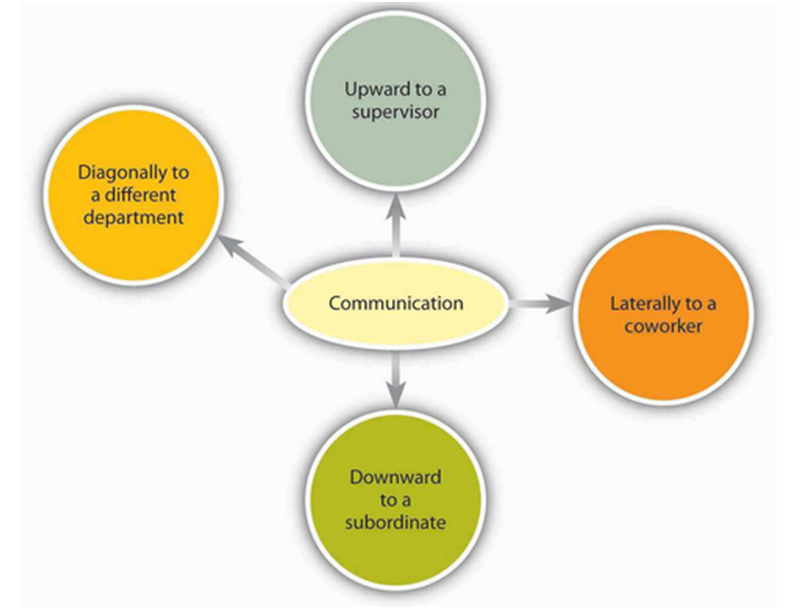Literature Review

According to the report published by the Chinese Ministry of Health (2002), it is said that the provision of health care services in the country is based on three-tiered system. While in rural areas the village health stations, town’s central hospitals and county hospitals form the three tiers, in urban areas the three tiers consist of neighbourhood health clinics, district hospitals and municipal hospitals. Dib et al (2009) note that this three-tiered system is aimed to ensure the efficient and effective provision of health care services while creating trusts and closer relationship between patients and doctors. As a first point of contact for patients, the health institutions at the lower level of the tier are designed to provide prevention and primary health care services. In practice, the private clinics account for majority of these low-level health instructions as they provide primary care services, health check-ups and cure minor diseases. On the other hand, county and municipal hospitals at the upper level of three-tiered system provide impatient, outpatient and emergence care services to the patients referred from lower level health institutions and hospitals (Chen Xiaohong, 2007). However, Yu Guangjun et al (2007) argue that this vertical structured three-tiered system itself is the one of the key reasons behind the failure of the Chinese health care system. The difficulty in getting transferred from low-level health institutions and obtaining access from hospitals at the top level of hierarchy due to long-waiting lists for registration and treatment, unnecessary long bureaucratic processes pinpoint the difficulties faced by patients, particularly in rural areas. Moreover, given the huge size of country’s population, the author argues that lack of trained doctors and health care professionals, shortage of medical equipments and facilities further diminish the ability of hospitals and other health institutors to receive and treat the patients. On…

As the oldest living civilization, history of the Chinese medicine goes back to nearly two thousand years. The methods and theories of the Chinese medicine considered as one of the oldest in the history of medicine and they have been practiced and developed further over the centuries. However, as many scholars note, China did not have organized and centralized health care network system until middle of the 20th century. The health care services were mainly provided by small, private clinics, local, individual healers as well as some religious or charity institutions, while big central health care station, which could qualify as a hospital, mainly cared after royal family and served the needs high-ranking officials and military personnel. This highlights the fact that private clinics and practitioner had played significant role in the history and development of the Chinese health care system. The earliest contemporary hospitals began to appear in China from 18th century in the form of missionary hospitals run by western churches. According to the statistics cited by Meng Qingyue et al (2000), prior to the formation of Chinese Communists state in 1949, there were around 768 hospitals providing health care services in the country. While only 248 of them were government-funded, remaining 520 were private hospitals indicating the private sector dominated the provision of health care services throughout the history of Chinese health care system. However, following the arrival of socialism and foundation of communist state in 1949, the role of private sector in the Chinese health care has diminished significantly within very short period of time. Ministry of health, which was set up by the government as a responsible body for overseeing the provision of health care services and running of country’s health care network, soon began transferring private hospitals into public ones. The Cultural Revolution, which…

According to Azhar (2003) organizational culture is the combination of important assumptions that are shared in common by each members of an organization and are often unstated. Organizational culture is basically made up by two major common assumptions: values and beliefs. Values are the assumptions that have been forwarded by the leaders of the organization and considered to be ideals that are desired by all the members of an organization. Beliefs on the other hand are the assumptions about the reality and created by experience. Robbins (1986) on the other hand, defines organizational culture as a uniform perception of an organization which has common characteristics. Organizational culture, according to the author is something descriptive and effectively it can distinguish one particular organization from another. It can also integrate individuals and groups of organization systems. Organizational culture is also defined by Rousseau (2000) as a set of commonly experienced stable characteristics of an organization which shows the distinctive features of an organization which differentiates it from others. Similar to the definitions of Azhar (2003) that has been stated above, Rousseau (2000) also define the organizational culture as set of norms and values that are shared by individuals and groups across the organization. Organizational values and beliefs refer to the common ideas about what the shared goals of an organization are, what types of behaviour should the members of an organization follow in order to achieve the common goals of an organization. These organizational values in turn form out the standard norms and guidelines for the organization that makes it distinct from others. Organizational culture is also defined by Schein (2004) as a pattern of shared assumptions that have been accepted by a group of individuals as they solve their problems. Because they have used these assumptions to solve their problems and…

Information and communication technologies (ICT) have had tremendous impact virtually all industries and sectors, as well as, specific business businesses processes. The impact of ICT on businesses relate to the facilitation of communication with organisational stakeholders, serving as an effective sales channel, providing an effective platform for engaging in marketing and others. Literature review is a “systematic, explicit and reproducible method for identifying, evaluating and interpreting the existing body of recorded work produced by other scholars” (Khan, 2008, p.41). Importance of conducting literature review in this paper can be explained in a way that it allows to present the most notable data about various important aspects of ICT in tourism and hospitality so that this data can be referred to during the case study analysis. ICT in Tourism and Hospitality Sector Parsons and Oja (2013) mention online reservations systems as one of the greatest impacts of ICT on tourism and hospitality sector. Major travel companies such as Expedia, Orbitz, and Thomas Cook, as well as, medium and even small sized tourism and hospitality firms have online reservation functionalities on official company website. Online reservation capabilities provide substantial cost saving opportunities for businesses in tourism and hospitality sector that otherwise would have been spent on human resources making reservations in a manual manner. Moreover, according to Mihalic and Buhalis (2013), while the majority of businesses in tourism and hospitality sector have adopted various components of ICT to certain extent, there are substantial differences between businesses in terms of extent and nature of adoption of those components. In simple terms, Mihalic and Buhalis (2013) argue that some tourism and hospitality organisations have effectively included ICT to the sources of competitive advantage, whereas opportunities offered by ICT are yet to be used by others. Importance of ICT to Small Hospitality Companies…

Brand has been defined as “the sum of all associations, feelings, attitudes and perceptions that people have related to the tangible and intangible characteristics of a company, product or service” (Brandeo, 2014). The definition of a brand image has been proposed as “the total, global impression of the information that accumulates in the memory of consumers in relation to a band” (Franzen and Moriarty, 2008, p. 241). The terms of branding in particular has been defined as “the process of continuous struggle between procedures ad customers to define the promise and meaning” (Healey, 2008, p.6). The issues of increasing importance of brands and branding in modern global marketplace have been addressed by a wide range of authors and the most noteworthy contributions to the issue have been made by authors such as Hill et al (2006), Franzen and Moriarty (2008), Clifton and Ahmad (2009), and Kotler and Pfoersch (2010). Interestingly, Okonkwo (2010, p.9) reasons that “the origin of brands comes from the times when early cattle-rearing men stamped their ownership on their livestock by burning a mark of their name or identity on the cattle, to distinguish one cattle-farmer’s stock from another’s”. However, according to Franzen and Moriarty (2008) the importance of branding has seen a significant boost during the past several decades, and reasons for this have been offered as increase in the level of well-being of consumers (Inkpen and Ramaswamy, 2006), increasing role of media (Steers and Nardon, 2008), and innovations in marketing communications (Alessandri, 2009). Abbing (2010) addresses the issues associated with the shift in the role and meaning of branding in a detailed manner and presents his findings in terms of differences in branding in the past and present in the following manner: Brands were previously often referred to as being Brands in current thinking are…
By John Dudovskiy
Category: Literature Review

The literature review has identified the main differences between private and public sector organisations to relate to organisational aims and objectives, organisational stakeholders and stakeholder expectations, the levels of public scrutiny, external environment and its impacts and sources of motivation for employees. 1. Differences in Organisational Aims and Objectives According to Kassel (2010), Chaston (2011) and others, organisational aims and objectives represent the main point for difference between public and private sector organisations. The main objective for the majority of private sector organisations relates to maximising financial returns for investors, whereas the majority of organisations in public sector have been found to pursue objectives other than profit maximisation, such as providing various services and products for the public (Kassel, 2010, Chaston, 2011). The level of clarity of organisational objectives has emerged as an additional difference between public and private sector organisations. Specifically, according to Wright et al. (2012), while the main or even only objective for private sector organisations – maximising profits is straightforward, and therefore clearly understood by employees at all levels, the perceptions of goal clarity amongst public sector employees tends to be lower. 2. Stakeholders in Public Sector and Private Sector Organisations and Their Expectations The type of stakeholders and stakeholders’ expectations has emerged as another point of stark difference between private and public sector organisations (Chaston, 2011). Stakeholders can be defined as “any party or group who is able to influence (affect) or be influenced (affected) by the organisation and its activities” (Brink and Berndt, 2009, p.156). Stakeholders can be divided into two categories: internal and external (Parhizgari and Gilbert, 2004, Crosby and Bryson, 2005). Internal organisational stakeholders have direct relationship with an organisation and they are directly impacted by performance of the organisation. External stakeholders, on the other hand, may not be impacted…

Reasonable amount of works have been devoted to the study of leadership skills and capabilities. According to Bertocci and Bertocci (2009), one of the most basic and necessary leadership qualities relates to the development of organisational vision in an effective manner and ensuring that employees are motivated by this vision. Ricketts and Ricketts (2011) consider the ability to influence others as a core leadership quality. At the same time, Ricketts and Ricketts (2011) accept that influencing can be done in a positive or negative manner and discusse the advantages of positive influencing as compared to negative influencing in long-term perspective. Similarly, the ability to motivate other people is seen by Davies and Brundrett (2010) as one of the most important trait for leaders. Confirming this point, Obolensky (2010) finds positive correlation between the level of effectiveness of organisational leaders, and the use of intangible motivational tools. In other words, according to Obolensky (2010) the most effective leaders use tangible motivational tools to a minimum extent, effectively appealing to inner psychological and career development needs of their subordinates. Differences between tangible and intangible motivators and their implications on leadership practices need to be explained in greater detail in order to further clarify the point above. Schermerhorn et al. (2011) confirm that tangible motivational tools include elements present in physical terms that can be obtained and/or experienced such as money, holidays, free meal, etc. Intangible motivational tools, on the other hand, include prestige, verbal and written appreciations from management, the provision of various titles etc (Griffin, 2011). Forsyth (2009) covers a greater range of leadership skills and capabilities in his work and represents interrelationships within leadership skills and capabilities in the following manner: Important leadership skills and capabilities Source: Forsyth (2009) Specifically, leadership skills and competencies are divided by Forsyth (2009) into…

Leadership styles are generally divided into four categories: autocratic, consultative, democratic, and laissez-faire (Daiels, 2004, Davies and Brundrett, 2010). The following table contains the description of each style, relevant leader behaviours and potential impact on employees: Style Description Leader behaviours Potential impact on employees Autocratic Basic premise: leader knows best. Communication flows downwards Controlling Directive Makes all decisions and solves all problems Issues commands Hostility Rebellion Consultative Basic premise: leader informs members of best concepts Directive approach; teacher of information Increases knowledge levels Democratic (Participative) Basic premise: every member should have input. Communication is open and mutual Acts as a facilitator. Serves as a resource person Encourages members’ active participation Improved productivity More opportunity for personal growth Increased cooperation and teamwork Laissez-Faire Leadership responsibilities are assumed by group. Almost any behaviour by group is permissible due to the leader’s lack of limit-setting and stated expectations Passive, non-directive approach. Provides little, if any support, guidance, or feedback. Sets no limits Unmet tasks Relationship needs of group members ignored Apathy Descriptions of leadership styles, leader behaviours, and potential impact on employees Source: Daniels (2004) The majority of authors stress the advantages of democratic leadership style over autocratic leadership at various levels. Interestingly, Dukakis et al. (2010) argue that the negative impacts of autocratic leadership are starkly evident in private sector organisations compared to public sector organisations. To explain this point, Dukakis et al. (2010) reason that leadership issues in private sector organisations associated with the application of autocratic leadership style would be reflected in the level of revenues, whereas leadership ineffectiveness in public sector organisations might be tolerated for longer periods of time. Davies and Brundrett (2010) warn not to dismiss autocratic leadership style as totally inappropriate referring to specific cases where autocratic leadership might prove to be effective. Davies and Brundrett…

Increasing importance of communication in organisations has been discussed by a number of authors, the most notably in the works of Mangion (2011), Guffey and Loewy (2012), Zeng (2012) and DeVito (2012). Mangion (2011) detects a direct link between the quality of management-employee communication and the level of achievement of organisational aims and objectives. Moreover, Mangion (2011) convincingly argues that increasing importance of communication in organisations is linked to shortening period of time associated with decision making. The level of communication in organisations between management and employees also has implications on the level of trust of employees towards management (Guffey and Loewy, 2012, Zeng, 2012). According to the findings of Guffey and Loewy (2012), in organisations where management regularly communicates with workforce employees tend to have greater level of trust and confidence, and consequently loyalty to their management. Similarly, DeVito (2012) finds positive correlation between the qualities of management-employee communication and the level of employee motivation. DeVito (2012) explains this finding in a way that a high quality of management-employee communication creates the feeling of involvement in organisational decision making in employees, and thus they become more empowered to perform their duties. Moreover, DeVito (2012) argues that communication in organisations might have several directions and illustrates these directions as it is represented below Directions of Organisational Communication Source: DeVito (2012) The most popular communication methods in organisations include e-mails, face-to-face meetings, group shifts meetings, scheduled and unscheduled meetings and others (Yates, 2007, Innis and Watson, 2008, Zeng, 2012). Hargie (2012) links the increasing importance of communication in healthcare organisations in particular to regular technological innovations and technological breakthroughs within the same sector. Moreover, important attributes of private healthcare organisations have been specified by Guffey and Loewy (2012) and Zeng (2012) as increased level of power of external stakeholders, high level…

A literature review can be explained as “account of what has been published on a topic by accredited scholars and researchers” (Herbst and Coldwell, 2004, p.31). Literature review conducted as a part of an academic research must meet the following basic requirements: 1. Literature review must be directly related to project questions and objectives. 2. Literature review must contain of synthesis of results into summary about what is known and not known about the project area. 3. Literature review must identify and discuss the areas of controversy in the literature. 4. Literature review must be instrumental in identifying areas for further research. References Herbst, F. & Coldwell, D. (2004) Business Research, Juta and Co Ltd
By John Dudovskiy
Category: Literature Review
